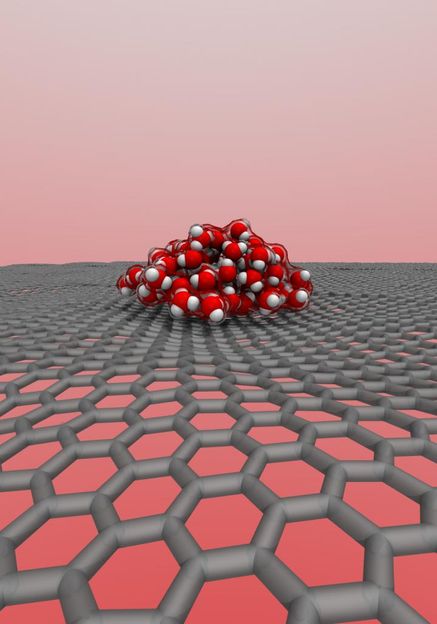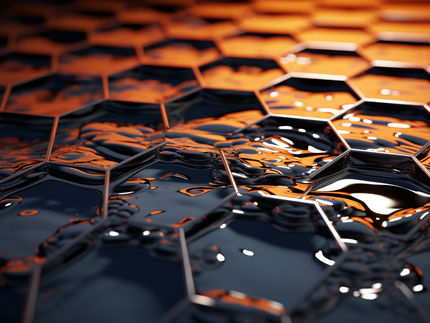Surfing water molecules could hold the key to fast and controllable water transport
Scientists have identified a new way of moving molecules across the surfaces of certain materials.
The team carried out sophisticated computer simulations of tiny droplets of water as they interact with graphene surfaces. These simulations reveal that the molecules can "surf" across the surface whilst being carried by the moving ripples of graphene.

Snapshot of a water nanodroplet "surfing" on a rippled graphene surface.
Ming Ma et al. (2015)
The study demonstrates that because the molecules were swept along by the movement of strong ripples in the carbon fabric of graphene, they were able to move at an exceedingly fast rate, at least ten times faster than previously observed.
Furthermore, the researchers found that by altering the size of the ripples, and the type of molecules on the surface, they could achieve fast and controlled motion of molecules other than water.. This opens up a range of possibilities for industrial applications such as improved sensors and filters.
Professor Angelos Michaelides, from the Thomas Young Centre and London Centre for Nanotechnology (LCN) at UCL, lead researcher of the study, explained: "Atoms and molecules usually move across materials by hopping from one point on their surface to the next. However, through computer simulations we have uncovered an interesting new diffusion mechanism for motion across graphene that is inherently different from the usual random movements we see on other surfaces."
The motion of atoms and molecules across the surface of materials is of critical importance to a long list of applications, such as the diffusion of molecules across the surface of catalysts, crystal growth or filtration. Of particular technological relevance, and attracting the most attention at present, is the study of water on graphene. Ongoing research suggests that water interacting with graphene has properties as exceptional and potentially transformative as graphene's electronic and mechanical properties.
Although scientists have used a whole array of experimental techniques in the past to investigate the atomic scale details of surface diffusion, they have generally studied the surfaces of traditional three-dimensional materials and have supported the notion that diffusion involves a simple random walk on the surface.
Dr. Ming Ma, the first author of the paper added: "Our work is the culmination of an extensive and meticulously validated set of simulations which has uncovered an unexpected result that may well be at the root of the promised performance of graphene in filters and sensors."
Original publication
Other news from the department science

Get the chemical industry in your inbox
By submitting this form you agree that LUMITOS AG will send you the newsletter(s) selected above by email. Your data will not be passed on to third parties. Your data will be stored and processed in accordance with our data protection regulations. LUMITOS may contact you by email for the purpose of advertising or market and opinion surveys. You can revoke your consent at any time without giving reasons to LUMITOS AG, Ernst-Augustin-Str. 2, 12489 Berlin, Germany or by e-mail at revoke@lumitos.com with effect for the future. In addition, each email contains a link to unsubscribe from the corresponding newsletter.



























































